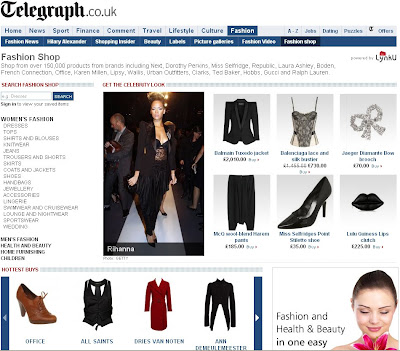 A fashion layout in Arise, one of Africa's new style magazines. The publication strives for the same quality standards as other international titles.
A fashion layout in Arise, one of Africa's new style magazines. The publication strives for the same quality standards as other international titles.
By ROBB YOUNG, The New York Times
Published: October 1, 2009
Sub-Saharan Africa doesn’t bring to mind the image of a woman with perfectly manicured nails flipping through glossy magazines in search of the latest handbag or celebrity haircut. Yet such women are there, and in far greater numbers than the media’s portrayal of Africa might suggest. In wealthy neighborhoods of Lagos; Nairobi; Luanda, Angola; Dakar, Senegal, and the like, ladies of leisure, successful businesswomen and aspirational middle-income housewives make up an attractive demographic that, in the past, relied on international fashion magazines for style and beauty information.
But in the past few years, while Condé Nast, Hearst and Hachette Filipacchi were expanding throughout Asia, Eastern Europe and the Middle East, a handful of African publishers was busy staking claims to this publishing territory. The result has been a wave of new glossies, like Arise, Haute, Helm and True Love, that put an African spin on fashion.
“Honestly, upwardly mobile African readers are crying out for this magazine,” says Helen Jennings, editor of Arise, a monthly style title started late last year by the Nigerian media tycoon Nduka Obaigbena, who also owns the country’s leading newspaper, This Day. “Because the local magazines aren’t as high end or progressive, and no other international titles speak directly to an African readership, Arise has really caused a stir.”
Arise occupies a unique position among magazines in English-speaking Africa as it alone packages both pan-African and global content, producing a provocative blend that Ms. Jennings calls “afropolitan.”
With a reported circulation of about 60,000 and averaging about 140 pages a month, the magazine is distributed to seven other African countries and around Europe and North America. In its no-expense-spared fashion shoots, clothes by African designers are paired with global brands like Yves Saint Laurent, Loewe and Ralph Lauren using popular black international models like Oluchi Onweagba and Rahma Mohamed.
Interviews with high-profile black celebrities, like the singer-songwriters Akon and VV Brown, and others, appeal to global advertisers. Tommy Hilfiger, Juicy Couture, Graff, L’Oreal and Lacoste are all represented in the magazine’s pages — and their prestige has helped pull in ads from fashion brands based in Nigeria, Ghana and Tanzania.
But Arise’s embrace of glamour and celebrity is tempered by a nod to the underground and an appreciation of irreverent reportage. A recent issue included a saucy exposé of African WAGs (the British acronym for wives and girlfriends of soccer players) that appeared alongside quirky items about Ugandan skateboarders, a multimedia prodigy from Ivory Coast and the leather-wearing biker subculture that grew up in Soweto after apartheid.
Read the rest of the article at newyorktimes.com





























